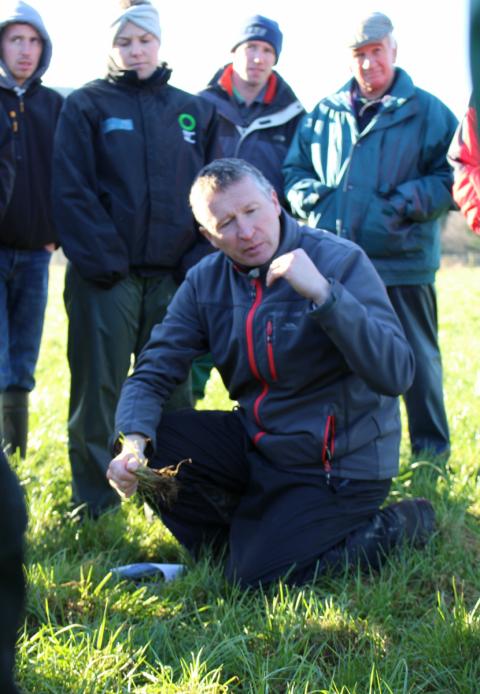Making the most of grass available this spring by turning cows out to graze earlier can help save money on feed and housing, boosting profitability. With some careful planning, spring grazing can be managed to ensure improved utilisation of grass throughout the season. Good farm infrastructure such as water troughs and tracks can also improve access to grass during the year.
Following a mild winter, there is a good supply of grass on many livestock farms, which is the cheapest feed available to farmers, at an average cost of £50-£60 per tonne of Dry Matter (DM). Ensiled forages are two and a half times as expensive as grass, while concentrates cost up to four times more. Planning a spring grazing rotation will help farmers to budget grass until mid-April, when growth rates start to rapidly increase.
“The ideal is to have high opening covers and then budget for a controlled reduction down to about 1,900kg DM/hectare until the crossover period where growth becomes higher than demand. From that point onwards surpluses will start to build,” Noel Gowan, of Grasstec Group told farmers at an event at Aberystwyth University farm Trawscoed, a Farming Connect Innovation Site.
“A grass budget helps you decide how many cows you can turn out and when, and you also need weekly measurements to determine your level of cover. Once cows go out utilisation of grass goes up, feed costs drop and you’re setting up the sward well for the second rotation.”
In the first rotation cows should graze for 12 hours but once conditions begin to improve in April, the allowance can be extended to 24 or 36 hours for the main grazing season.
At Trawscoed, there are plans to increase the size of the 400-head all year round calving herd and make better use of home-grown forages. Grasstec has GPS mapped the farm and redesigned the paddocks to ensure they are all evenly-sized, to make grass budgeting easier. A new water system has also been suggested. The loop system will have a 40-50% quicker refill rate to help meet peak demand. Water troughs will be replaced with bigger, better placed troughs serving each paddock and existing tracks will also be upgraded.
“When redesigning the grazing platform take time to plan, build it big enough allowing for expansion and understand the capacity of your farm,” added Mr Gowan.
In order to boost profits from grazing and reduce the amount of purchased inputs, maximising utilisation of grass grown on the farm is key.
“The driver of profit is grass utilisation, with the most recent data set from Ireland and New Zealand showing there is the potential for £220-£230 more profit per hectare for every tonne DM of grass that you utilise.”
The most efficient farms utilise about 85% of grass and to improve utilisation, the amount of tonnes of DM grown should be increased by following some basic rules:
- Graze down to a low residual height of 3.5cm-4.5cm to supress the production of seed heads and stemmy tillers which are lower in feed value, leading to reduced DM intake and subsequently reduced cow performance.
- Graze off paddocks quickly before stock eat the regrowth. Grass uses energy in its roots to grow new leaves, but if the regrowth is taken off there will be no energy store and growth will be stunted. Paddock size and grazing hours will help control this.
- Rest paddocks between grazing to allow tillers to recover to the three leaf stage. Rotation length should be between 30-60 days in spring, 18-22 days in summer and 30-45 days in the autumn.
- Measure grass covers. If covers are too high – above 3,500kg DM/ha - light will not reach the base of the sward, prompting slower regrowth and it will be harder to graze down to 4cm. If covers are too low – less than 2,500kg DM/ha – cows have to work harder to achieve their intakes.
“Graze when covers are at 2700-3000kg DM/ha so it’s easier to graze down to 4cm. This is ideal for maximum DM intake and higher cow performance.”
Did you know that there are e-learning modules covering the topic of ‘Get Smart with Grass' available online? The bite-sized interactive module can be completed in around 15 – 20 minutes, you can access the ‘Get Smart with Grass’ modules along with modules covering a variety of other topics on the BOSS website https://businesswales.gov.wales/boss/lms/login.

